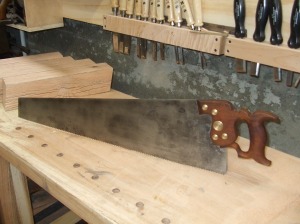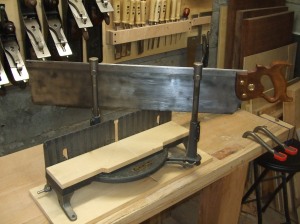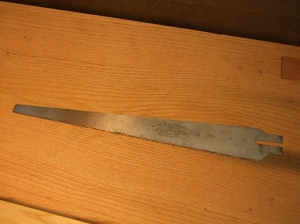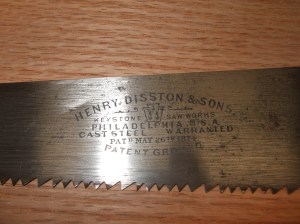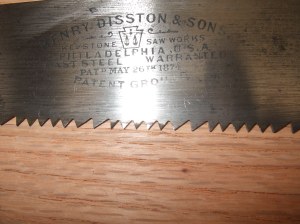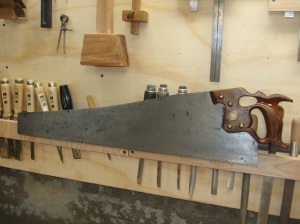If you’re not familiar with Josh Clark of Hyperkitten then do yourself a favor and surf on over to his site. Josh is without a doubt the coolest damn antique tool dealer this side of the Mississippi.
Case in point is the recent package of tools I got from Josh….he knows I am an avid saw-freak and always manages to find the nicest scratch for my particular itch. Josh can find just about anything, and his prices are extremely fair…even bordering on ridiculous at times.
As it were, this latest package of booty from Josh contained a couple very nice older English saws, and some saw parts…take a look…
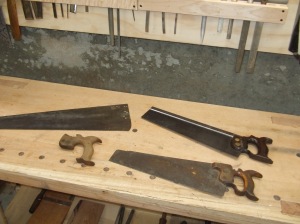
A tisket, a tasket, a mid-19th century English sash saw and other sundry goodies. 🙂
One of said goodies was a decent 24 inch Disston #7 saw plate with 8 points that was begging to be cleaned and re-united with a proper tote. So I figured this would be a great opportunity to blog about my methods of cleaning an old rusty saw plate and use the #7 as my model.
Over the last year or so, I’ve been experimenting with lots of different ways of cleaning saw plates, and recently, I have settled on a method and materials that are efficient and readily available.
To get started, you really only need two basic items….Simple Green cleaner and 400 grit abrasive paper….
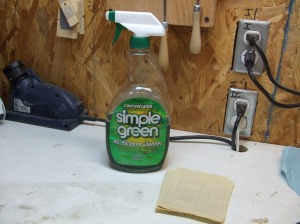
If you were to conduct a survey of those who clean saw plates regularly, you will find that most use mineral spirits as their abrasive lubricant, and no doubt MS works well on cleaning rust and grime, but it also excels at causing neurological damage….a fact that motivated me to find an alternative.
That search lead to all sorts of things, some petroleum distillates, some other types of solvents. Eventually, I found Simple Green. I recalled a member of WoodNet mentioning that he had used window cleaner with good results, and I thought how great it would be if I could find a regular cleaning product that would work on my saws, AND would have the added benefit of not shortening my life. So, I picked up a bottle for $5 and had at it…
…with outstanding results!!!! This stuff has pleasant minty scent and cuts grime and rust just as well as mineral spirits….I truly cannot tell the difference in its ability of to disolve rust and grime, nor in the lubricating properties of the S.G. nor its ability to prevent clogging on the abrasive paper. This stuff rocks! So, save your precious brain cells for beer drinking and retire your mineral spirits. 😉
The other item you’ll need is 400 grit abrasive paper….automotive wet/dry paper will hold up better, but Norton 3x aluminum oxide paper is also good. I use both, but tend to use more of the Norton stuff ’cause I can buy it in bulk from Woodcraft.
Now that we’re ready to start the saw cleaning, there’s just one more thing…make a paper pad for the saw plate….this is an important step that I recommend.
What is a paper pad and why should you use one? Well, a paper pad is basically just a piece of heavy craft paper cut in the shape of your saw plate, and you should use one because of this simple reason: as you’re sanding away on your saw plate, the abrasive breaks up and gets carried away by the slurry from the cleaner, and this loose abrasive invariably ends up getting all over the bench top you’re working on. The last thing you want is that loose abrasive getting embedded into the work surface you are pressing down on so that when you flip the nice clean saw plate over to work on the other side, you grind all that abrasive back into the fresh steel on the clean side and scratch up your saw. I used to go crazy trying to figure out complex ways of cleaning my bench top between sides until I came up with this little “saw pad” trick.
To make one, just lay your saw plate on an over sized piece of brown craft paper or resin flooring paper. Place your saw plate on the piece and trace around it with a razor….
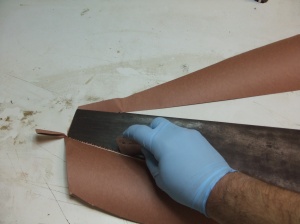
What you’re left with is a perfectly shaped paper pad for your saw…
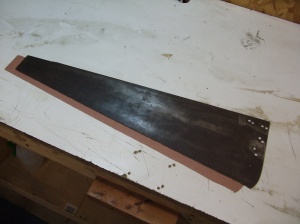
Now you’re ready to clean!
Place your saw plate on the pad and spray generously over the plate…squirt about four or five pumps worth for one side. Grab a square of 400 grit abrasive paper and start scrubbing. Always scrub with the length of the saw….NEVER scrub across the width of the saw. Steel is just like wood….always sand with the grain….cross grain scratches on steel are just as tough to get out!!!
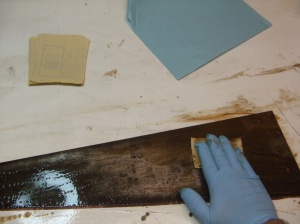
You’ll notice that I don’t use a sanding block here…and there’s an important reason why. If I was trying to preserve or uncover the etch on this saw, then yes, I would use a sanding block over the area of the etch…but ONLY over the area of the etch and not anywhere else on the plate. Why?
I’ve found that using a backing block over the whole saw prevents the abrasive from getting into the subtle undulating texture of the saw plate, and you end up with a saw that has varying spots of cleanliness and polish…very uncomely. So use a block over the etch if you want to save it, or skip it all together if you are not worried about the etch. I’ll write about how to resurrect an etch in another post…that’s a fun little exercise that deserves its own spotlight. 🙂
Back to the saw….
Depending on how dirty and rusty your saw is, you’ll probably need to clean the slurry away and switch to a fresh sheet of abrasive paper every couple of minutes. Don’t be stingy with the abrasive….its cheap and this is drudgery you want to end ASAP, no doubt. Make sure you focus particular attention along the toothline…I always give the teeth special attention and use two sheets of abrasive to ensure I’m getting it good.
After about ten minutes of work and three or four squares of paper, here’s what you get…
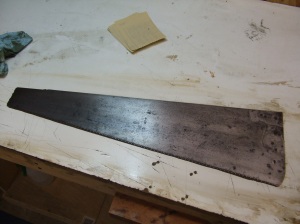
Now, as Pete Taran says on his site, no ones going to mistake your saw for brand new after cleaning, but then again, why would you want them to? Right? As you can see from the pic, the plate has a bit of sheen, but is free from loose dirt, rust, corrosion and crud. To me, this is the perfect balance of cleanliness, polish and vintage look….if you were to go one grade of abrasive finer, you’d start to really polish the high spots on the saw plate and it would begin to look strange….like a high-carbon skin disease. 😉 For me, 400 grit provides that perfect balance between too clean, and not clean enough.
Now you can flip the saw over and repeat the process on the other side. You’ll notice that your saw pad has gotten wet and started to dissolve along its edges, but no fear, it is still doing its job of keeping you saw off of loose abrasive that could now scratch it up.
After you finish the other side, make a point of abrading the edges of the plate as well….run the abrassive paper along the spine, nose and heel of the saw. The fine edges clean very quickly, and add another level of refinement to your new prize. You can even work a little folded up piece into the nib and clean it of the rust and grime.
Next, I take my saw over to the sink and rinse the hell out of it under warm water…yes, I said water. This is the easiest way to clean the saw of gunk, slurry and abrasive. Don’t worry about the water rusting your saw…you’re going to dry it next. I wipe down the saw right from the faucet, but don’t worry about getting every drop of water because now its over the shop vac, which I’ve reversed into a high-powered blower, and I blow it thoroughly dry…focusing on the bolt hoes and teeth, in particular.
Here she is all cleaned up…
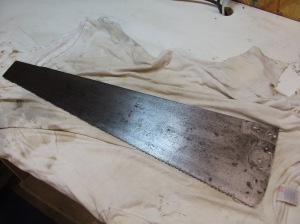
Now that she’s all nice and rust free, we want to keep her that way…a quick coat of paste wax will work wonders. I’ve tried different kinds of waxes, and they all work, but stay away from Briwax as it has caustic solvents like xylene and toluene that really serve no purpose here other than making you light-headed and possible giving you cancer. I like Minwax paste wax ’cause its cheap and readily available…
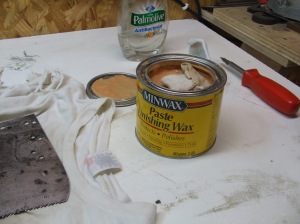
A minute to buff and dry, and here she is….ready for her next life…
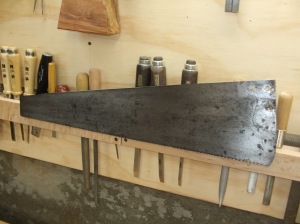
Finally, I dig through my pile of orphaned saw totes and select a nice patinated apple tote with a lamb’s tongue. It’s not a historically correct match for this Disston #7, as its tote would be beech, but the two look so damn good together I just can’t help it…
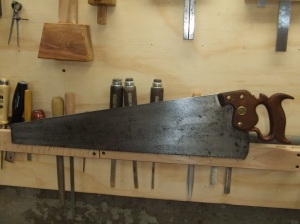
So, that’s about it…nice and simple. Like I mentioned at the start, I’ve tried all sorts of ways of cleaning saw plates, but most of them use too much materials for very little improvement over this simple approach. One cleaner, one grit and you’re done.
As always, thanks for stopping by….
Happy sawin’
-Matt 🙂
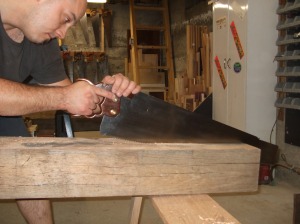
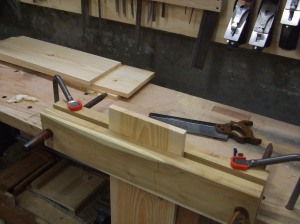
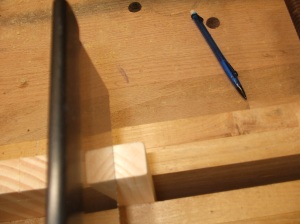
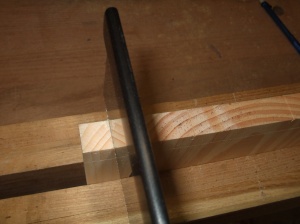
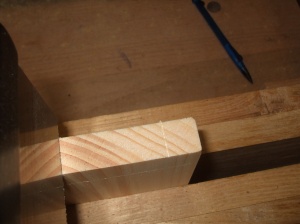
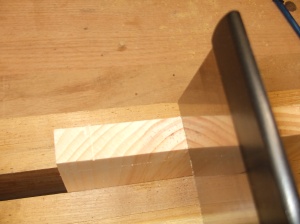
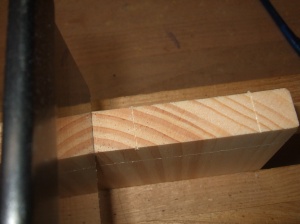
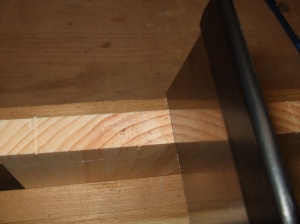
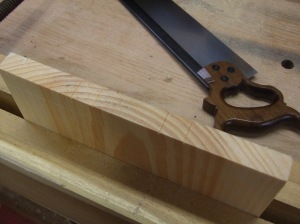
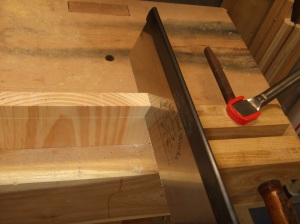
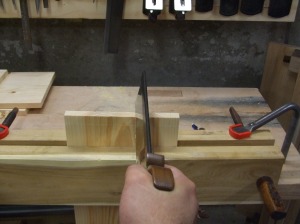
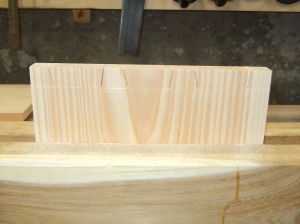
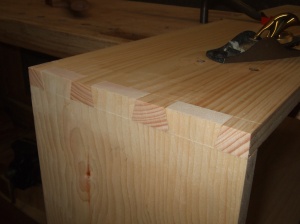
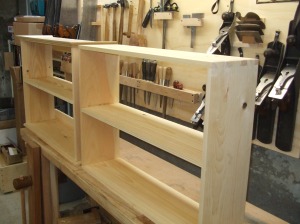
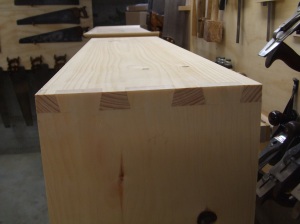


 Wenzloff & Sons Disston #77
Wenzloff & Sons Disston #77 Bad Axe 10 inch Dovetail Saw
Bad Axe 10 inch Dovetail Saw Lie-Nielsen Dovetail saw
Lie-Nielsen Dovetail saw